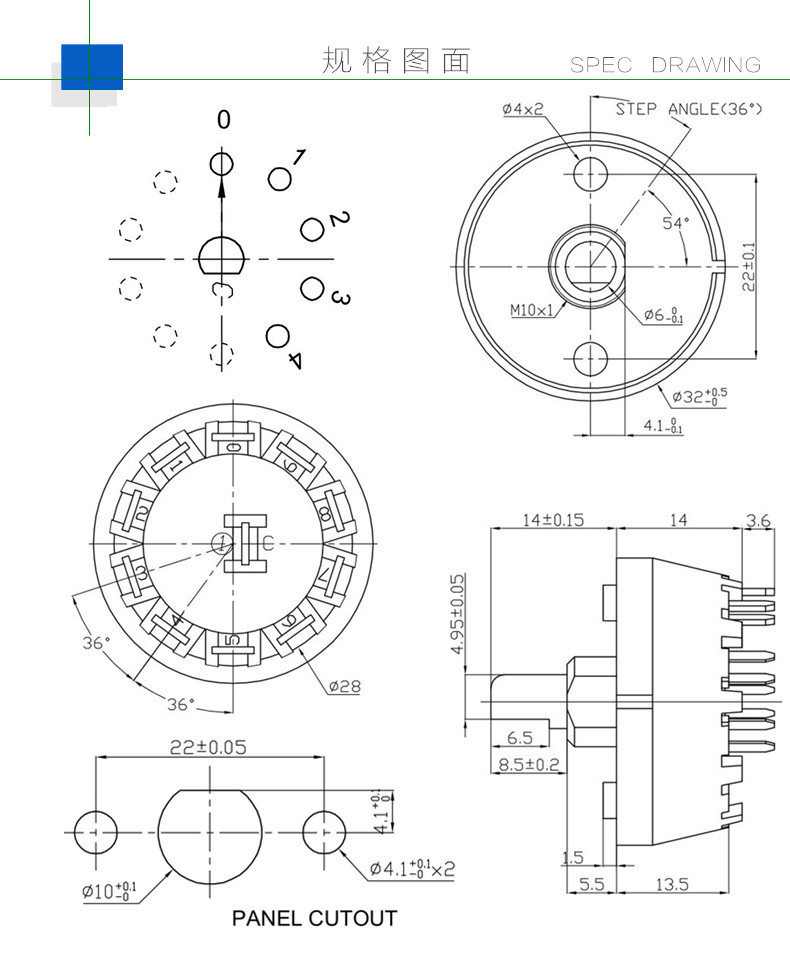A rotary power switch is an electromechanical component that achieves circuit on/off or function switching through rotational operation, widely used in devices requiring multi-level control or precise adjustment. Below is a detailed introduction:
- Rotary Handle/Knob: The component directly operated by users, often marked with gear indicators on the surface (e.g., "OFF", "ON", "1", "2", etc.).
- Contact Assembly: Composed of fixed contacts (stationary contacts) and rotating contacts (moving contacts) inside, which change the connection state of the contacts by rotating the knob.
- Positioning Device: Such as card slots, springs, etc., to ensure the knob stays stably in specific gears and prevent misoperation.
- Housing: Mostly made of metal or insulating plastic, providing mechanical protection and installation support.
- Single Pole Single Throw (SPST): When rotated to a specific angle, it only realizes the single function of circuit on (ON) or off (OFF).
- Single Pole Multiple Throw (SPDT/SP3T, etc.): Switches between multiple gears through rotation to connect different circuit paths, achieving multi-level control (e.g., power gear adjustment).
- Multiple Pole Multiple Throw: Multiple independent contact groups rotate synchronously, enabling simultaneous control of multiple circuits (e.g., three-phase power switching).


 Structure and Working Principle
Structure and Working Principle Working Principle
Working Principle App
App No public
No public